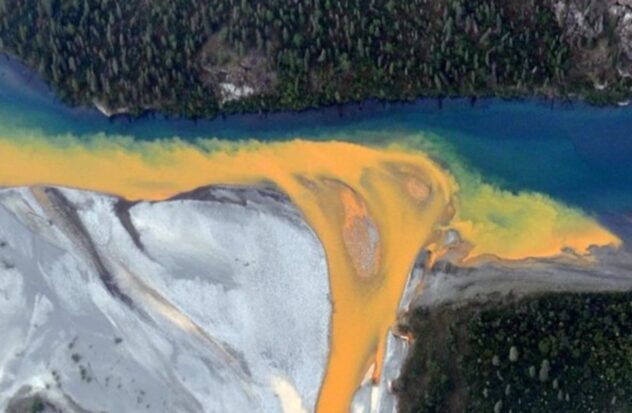Dozens of streams and rivers are changing color in Alaska, going from crystal blue to orange. However, after years of research, scientists and researchers from the National Park Service, the US Geological Survey, the University of California at David and many other institutions They have studied and taken samples of the waters of 75 locations, in an area the size of Texas in the Brooks Range of northern Alaska and appear to have reached a conclusion. The results have been shared in Communications Earth & Environment.
Using remote sensing, the researchers discovered that warming could cause the permafrost to thaw, generating an increase in the load of iron and toxic metals in its waters. They explain that thawing permafrost can promote chemical weathering of minerals, microbial reduction of soil iron, and groundwater transport of metals to streams. This will mean that the affected rivers and streams will be literally rusting. This phenomenon, aggravated by climate change, could generate negative consequences in the environment, in drinking water and fishing in the Arctic basins, according to the experts. It should be noted that the Arctic area is warming almost four times faster than the rest of the world, so it would make a lot of sense.
The further we flew, we began to notice more and more orange rivers and streams, The lead author of the research, Jon ODonnell, an ecologist with the NPS Arctic Monitoring and Inventory Network, stated in a statement. There are certain places that look almost like milky orange juice. Those orange streams can be problematic in terms of being toxic, but also They could prevent the migration of fish to spawning areas.
It was in 2018 when the researcher first became aware of the problem, when he noticed that a river appeared rusty, even though it had been cleaned the previous year. After that, he began to investigate by accessing different remote parts, where helicopters are generally the only way of access, to collect water samples from rivers and streams.
On the other hand, assistant professor of environmental toxicology at UC Davis, Brett Poulin, stated that To be able to observe these color changes from space you have to dye them a lot. According to his experience, this researcher thought that this phenomenon was similar to what happens with acid mine drainage, however, there are no fences near the polluted rivers.
Permafrost: the main theory
The affected rivers and streams are located on federal lands managed by the Bureau of Land Management, the Fish and Wildlife Service, and the NPS, including Gates of the Arctic and Kobuk Valley national parks. One of the main hypotheses is that, as the climate warmed, the permafrost thawed, releasing the stored minerals, becoming exposed to water and oxygen, which generated the release of metals and acid. Chemistry tells us that minerals are eroding, says Poulin, who adds understanding what is in the water is a fingerprint of what happened.
The study was carried out taking samples in different months of the year. Specifically, Poulin and Taylor Evinguer analyzed some initial samples, later collected theirs on a trip they made in August, and finally, others took other samples in June and July. Likewise, during this year they will make three additional trips to take more samples. The results of the samples astonished the researchers, who found that Some of the samples registered as low as 2.3 pH instead of the average of 8 for these rivers.
According to the researchers, this will mean that the sulfide minerals are eroding, creating highly acidic and corrosive conditions and eventually causing additional metals to be released. Some of the metals of which unusual or elevated levels have been collected are iron, nickel, copper, cadmium and/or zinc. One of the most dominant metals is iron. That’s what causes the color change.. Furthermore, another of the findings they have reached is that although researchers noticed the change in 2018, satellite images have been discovered that would demonstrate that stained waters have already existed since 2008.
Possible consequences
For now, the researchers continue with their project, which has already been going on for two years under a three-year grant, which aims to understand the reason behind this phenomenon, and evaluate its possible consequences for drinking water and its environment. There are many implications, according to ODonnell, who points out that as climate change continues to increase there is a possibility of streams turning orange and degrading in terms of water quality.
In fact, the majority of nearby communities depend on these rivers for drinking water, so the problems persist. They could be seriously affected, as could the fish populations that feed the nearby population. I think there will be much more detailed work to follow to address some of the uncertainties we currently have.concluy ODonnell.
Follow the Diario AS channel on WhatsAppwhere you will find all the sport in a single space: the current news of the day, the agenda with the latest news of the most important sporting events, the most outstanding images, the opinion of the best AS brands, reports, videos, and some humor from time to time.



